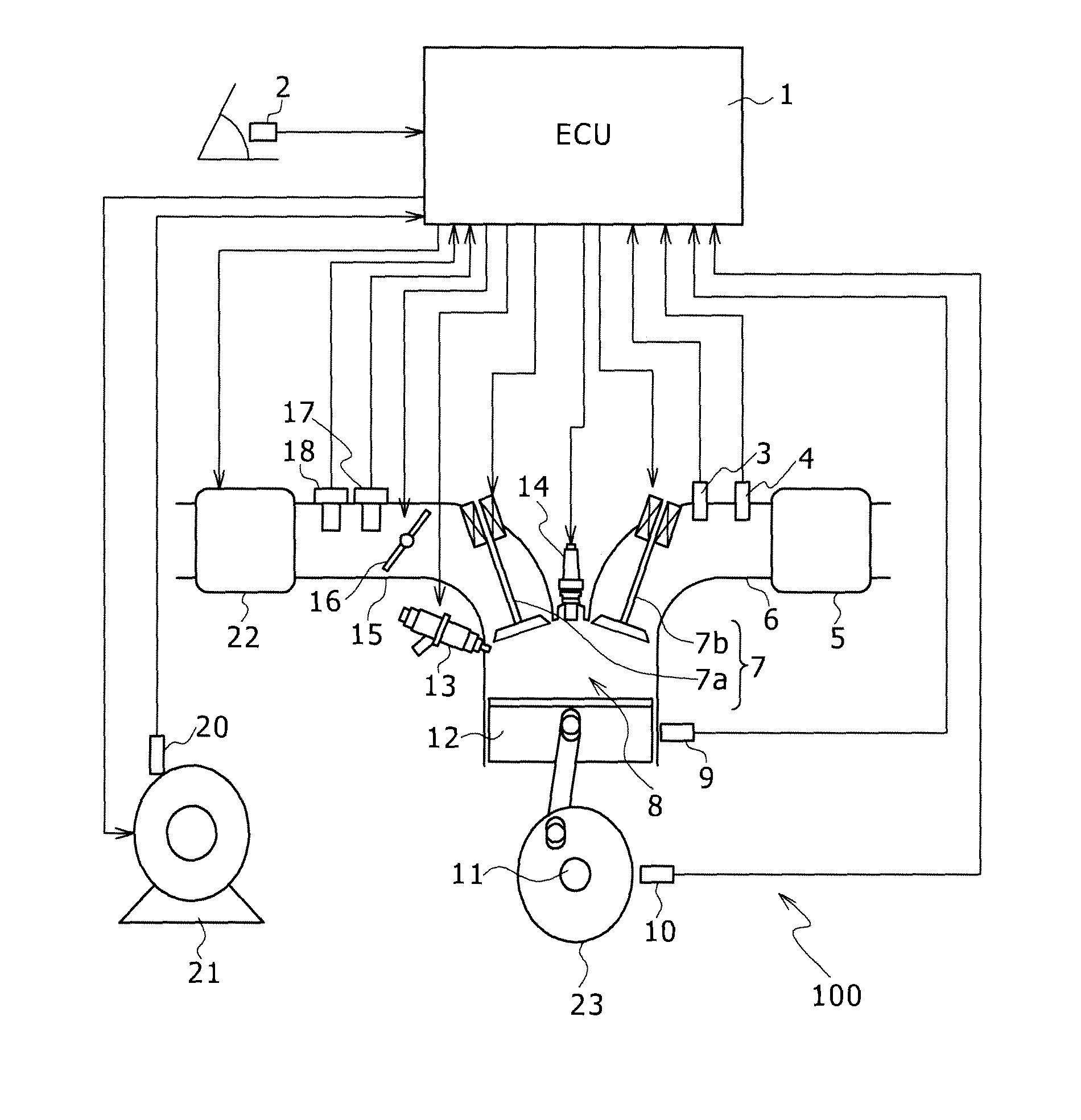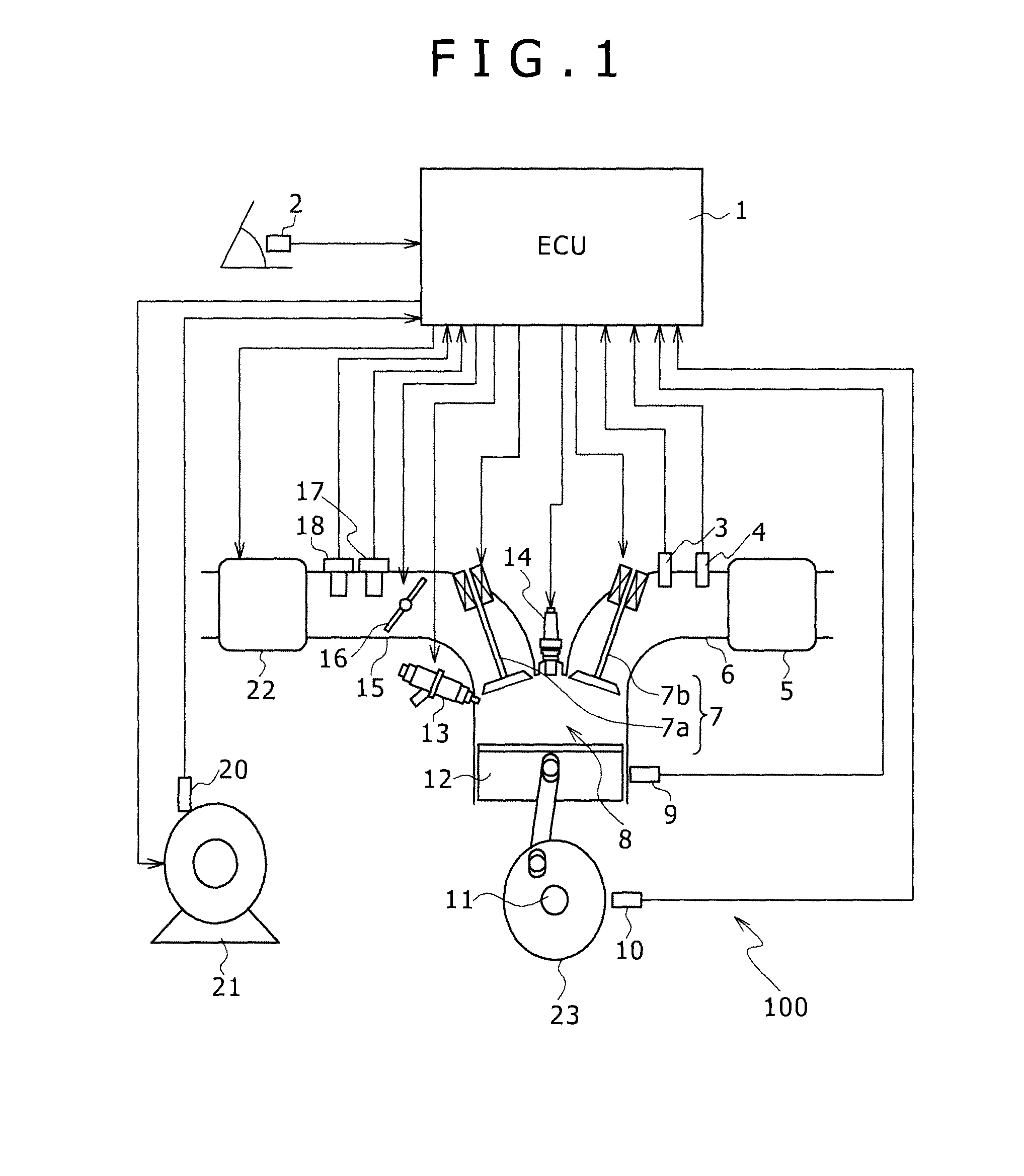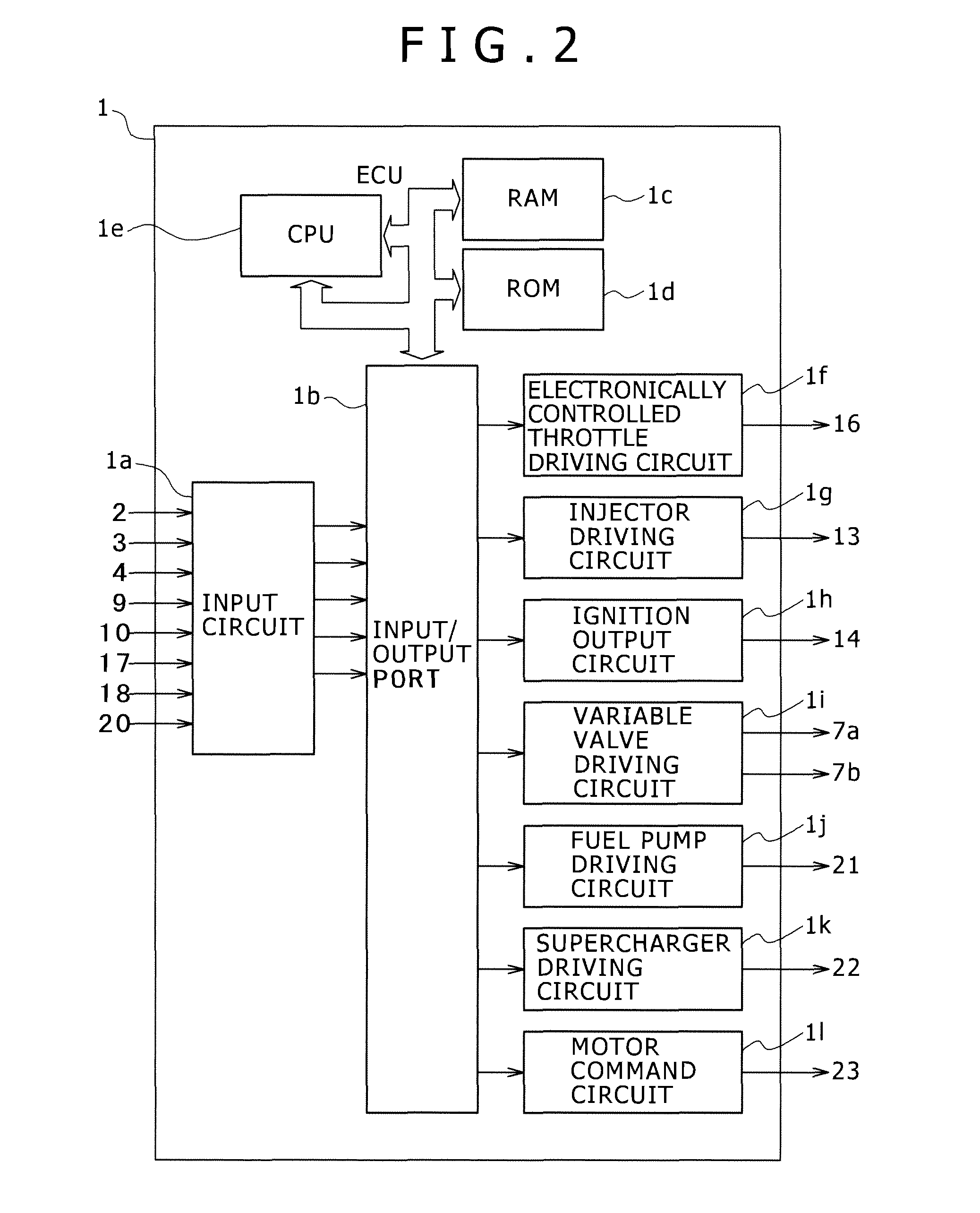Method for detecting combustion noise in internal combustion engine, combustion noise detection device, and device for controlling internal combustion engine
a technology for internal combustion engines and detection devices, applied in the direction of electric control, ignition automatic control, instruments, etc., to achieve the effect of improving detecting the combustion condition with high accuracy, and improving the fuel efficiency performance or/and the emission performance of the internal combustion engin
- Summary
- Abstract
- Description
- Claims
- Application Information
AI Technical Summary
Benefits of technology
Problems solved by technology
Method used
Image
Examples
first embodiment
[0052]A structure of a device for controlling an internal combustion engine according to a first embodiment is described using FIG. 1. The device structure of this embodiment is assumed to be applied to a gasoline internal combustion engine for automobiles.
[0053]The internal combustion engine 100 is the gasoline internal combustion engine for automobiles that performs different combustion modes: (1) spark ignited combustion and (2) compression ignited combustion. Both combustion modes use an air-fuel mixture having the same air-fuel ratio.
[0054]Here, (1) spark ignited combustion is a method in which the air-fuel mixture fed into the internal combustion engine is ignited by an ignition plug mounted to a cylinder head and combusted and (2) compression ignited combustion is a method in which air fed into a combustion chamber is adiabatically compressed by a piston to increase its temperature and fuel is injected into this air, thus causing self-ignition and fuel combustion or a method ...
second embodiment
[0148]Next, a second embodiment of the present invention is described using FIGS. 21 through 24. As for component parts that are fundamentally the same as those of the first embodiment depicted in FIGS. 1 and 2, their descriptions are omitted.
[0149]The difference from the embodiment depicted in FIGS. 1 and 2 lies in that the second embodiment is arranged such that both a resonant knock sensor and a non-resonant knock sensor are used and a combustion noise is detected using these two knock sensors.
[0150]In FIG. 20, a non-resonant knock sensor 9 and a resonant knock sensor 24 are attached to the cylinder block and signals from these sensors are input to an input circuit 1a as present in FIG. 21.
[0151]Then, using FIG. 22, descriptions are provided about knock sensor characteristics of the non-resonant knock sensor 9 and the resonant knock sensor 24. In particular, a graph of S / N ratio as a sensitivity indicator is presented, in which the abscissa plots frequency and the ordinate plots ...
third embodiment
[0162]Next, a third embodiment of the present invention is described using FIGS. 25 through 31. As for component parts that are fundamentally the same as those of the first embodiment depicted in FIGS. 1 and 2, their descriptions are omitted.
[0163]The system structure in FIG. 25 is substantially the same as the embodiment depicted in FIGS. 1 and 2. The difference lies in that more combustion modes are applied instead of the two regions of spark ignited combustion and compression ignited combustion; i.e., the operating scope is divided into four combustion regions: (1) stoichiometric (theoretical air-fuel ratio) spark ignited combustion; (2) lean combustion; (3) exhaust gas recirculation combustion; and (4) compression ignited combustion, and combustion control is exerted on these regions. Thus, the control map within the ECU 1 is created in accordance with this. In the present embodiment:
(1) Stoichiometric spark ignited combustion is a combustion mode in which air-fuel mixture havin...
PUM
 Login to View More
Login to View More Abstract
Description
Claims
Application Information
 Login to View More
Login to View More - R&D
- Intellectual Property
- Life Sciences
- Materials
- Tech Scout
- Unparalleled Data Quality
- Higher Quality Content
- 60% Fewer Hallucinations
Browse by: Latest US Patents, China's latest patents, Technical Efficacy Thesaurus, Application Domain, Technology Topic, Popular Technical Reports.
© 2025 PatSnap. All rights reserved.Legal|Privacy policy|Modern Slavery Act Transparency Statement|Sitemap|About US| Contact US: help@patsnap.com



